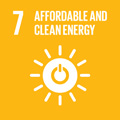- Docente: Marco Costa
- Credits: 5
- SSD: M-PSI/01
- Language: Italian
- Teaching Mode: In-person learning (entirely or partially)
- Campus: Cesena
- Corso: Single cycle degree programme (LMCU) in Architecture (cod. 9265)
-
from Sep 23, 2025 to Dec 16, 2025
Learning outcomes
The course will focus on architectural psychology.
Course contents
Perception and perceptual segregation of space
Perception illusions
Space perception, perspective, 3D visual cues
Biophilia and the use of phitomorphic geometry in architecture
Fractal geometry and applications in architecture
Architectural aesthetic: cognitive and evolutionary perspectives
Emotional and cognitive associations of geometrical shapes. Use of these associations to convey specific emotional and cognitive states in architecture.
Color perception, color measure, color choice and use in architecture and design
Acoustical assessment in architecture. Techniques of noise reduction, noise cancellation. Noise stress and annoyance. Functional music in shops and stores. Soundscape.
Proxemics and interpersonal distances
The contribute of environmental psychology for the design of residential, educational, healthcare environment.
The contribute of environmental psychology for the design of green spaces.
Readings/Bibliography
Costa, M. (2013). Psicologia ambientale ed architettonica. Milano: FrancoAngeli Seconda Edizione
Hachen, M (2007). Scienza della visione. Spazio e Gestalt, design e comunicazione. Maggioli Editore
Booth, N. K. (2012). Foundations of landscape architecture: Integrate form and space using the language of site design. New York: Wiley
Teaching methods
The students will be actively involved in the course with drawings, watercolors, site analyses and the design of architectural spaces.
Assessment methods
The exam will be focused on the assessment of graphical assignments, watercolor renderings, and course notes. Prerequisite is to have accomplished all the graphical and watercolor exercises assigned by the teacher during lessons.
Teaching tools
- Drawing tools: pencils, india-ink pens, set-squares, compass.
- Drawing paper (200g/m2) book for notes, drawings, skectches;
- A4 watercolor paper 300g/m2;
- Watercolor set (it is enough a basic set with 12 half-pans);
- Watercolor brushes;
- Palette or white ceramic dish;
- India ink;
- Cup for water.
Office hours
See the website of Marco Costa
SDGs




This teaching activity contributes to the achievement of the Sustainable Development Goals of the UN 2030 Agenda.
